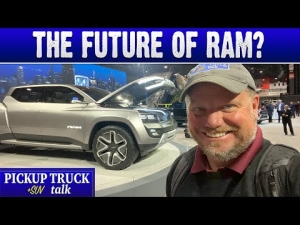This Dead Car Brand Was the First Brand to Manufacture With Fully Automatic Transmissions
Those not keen on history might be surprised to know that Oldsmobile was once a luxury brand that competed against Mercedes-Benz, BMW, and Jaguar. Like most fledgling automakers in those days, Oldsmobile earned its reputation for making luxury cars due to groundbreaking innovations. However, before we get too far ahead of ourselves, it’s important to understand that some, if not most, of the technology back then had been originally patented by inventors years before automakers incorporated it into their vehicles. One case is with automatic transmissions.
The Automatic Safety Transmission
One doesn’t have to be an inventor to be an innovator as long as you’re willing to invest time and money to help improve the inventor’s prototypes. The earliest generation of GM leadership did exactly that, sort of like the Microsoft of their day. Thus, Oldsmobile models were the first cars equipped with an automatic transmission called an “Automatic Safety Transmission” (AST). GM procured the patent from a Canadian named Alfred Horner Munro, who conceptualized it in 1923. It’s important to remember that automaker divisions functioned far less autonomously way back then.
Basically, those charged with running Oldsmobile back then were primarily responsible for day-to-day operations. GM still had significant control over technology acquisition, design, and research and development as the parent company. It’s not to say Cadillac and Oldsmobile had absolutely no involvement, just not to the level of decision-making done by their parent company. Plus, as it turned out, Munro’s fancy AST used air pressure, resulting in diminished power output and the inability to be driven in reverse. Only the 1937 and 1938 model year Oldsmobile models were equipped with AST as a result.
Innovations don’t have to be completely new or unique to change the world
It became clear why GM seemingly scrapped the Automatic Safety Transmission after just two years. Just as it had done with Munro, GM lucked out in acquiring another, more promising automatic transmission from two Brazilian engineers named Fernando Lehly Lemos and José Braz Araripe in 1940. However, Lemos and Araripe provided a complete schematic and a physical prototype instead of merely another patent. Most importantly, it was the first automatic transmission using “hydraulic fluid,” allowing the vehicle’s engine to deliver much more power and speed. GM gave its new automatic transmission a fitting proprietary name: “Hydramatic.”
As a credit to Oldsmobile, it was the first automaker to mass-produce a liquid hydraulic automatic transmission. This would prove a game-changer once the United States entered World War II. Oldsmobile suspended vehicle manufacturing to assist the war effort, producing liquid hydraulic automatic transmissions for American tanks and other armored vehicles. The Nazis had the Panther, one of the largest military tanks, but the United States had speed and agility thanks to Oldsmobile.
The death of Oldsmobile by a thousand cuts (and betrayal)
In an article published by MotorTrend, the author utterly killed both GM and Oldsmobile with razor-sharp cynicism: “There was no Rocket V-8 engine in the last Oldsmobile made, nor was there a “Cutlass” nameplate anywhere on the body. The last car from a brand that once defined middle-class aspiration was an Alero, a far from aspirational and totally forgettable compact. GM didn’t want to forget it, though, so the Dark Cherry Metallic four-door went to the GM Heritage Collection. Thinking better of it later, GM sold off the car in December 2017, and it fetched an entirely un-Alerolike $42K.”
It would be easy for anyone unaware of GM’s sorted history to look at Oldsmobile during its hospice days and blame it for its death. Auto analysts have cited the brand as having uninspired engineers and indistinguishable styling, thanks to a succession of incompetent leaders. It didn’t help that Oldsmobile went through managers like a fast-food joint located on the wrong side of town, with six of them in just 13 years. That averages out to a new manager every two years coming into an unwinnable situation, figuring it out, and deciding they would rather not have a sunk ship on their resume.
Toward the end, whoever was in charge of hiring stopped trying altogether, choosing an individual who had only a single management position listed on their resume, that of a brand manager for Alpo, the dog food company. Considering GM was sending Oldsmobile out to the dogs, that final hiring choice was either ironic or a cruel joke.
Carmakers can’t simply decide to kill a division, mark its death on a calendar, and pull the plug when the date arrives in the auto industry. Millions of people owned Oldsmobile back then, which meant that to kill it meant millions of people essentially owned a symbol of failure. That would ultimately result in those millions of people along with hundreds of dealerships turning on GM, not to mention a litany of class action lawsuits. In other words, if you want to kill an automotive division, it has to look like a suicide or natural causes. For example, blame Asia a few times in the media and hope no one was really paying attention. Or, as Investopedia claims, “unprofitability.”
RELATED: What Is the Difference Between Powertrain and Drivetrain?
The post This Dead Car Brand Was the First Brand to Manufacture With Fully Automatic Transmissions appeared first on MotorBiscuit.







